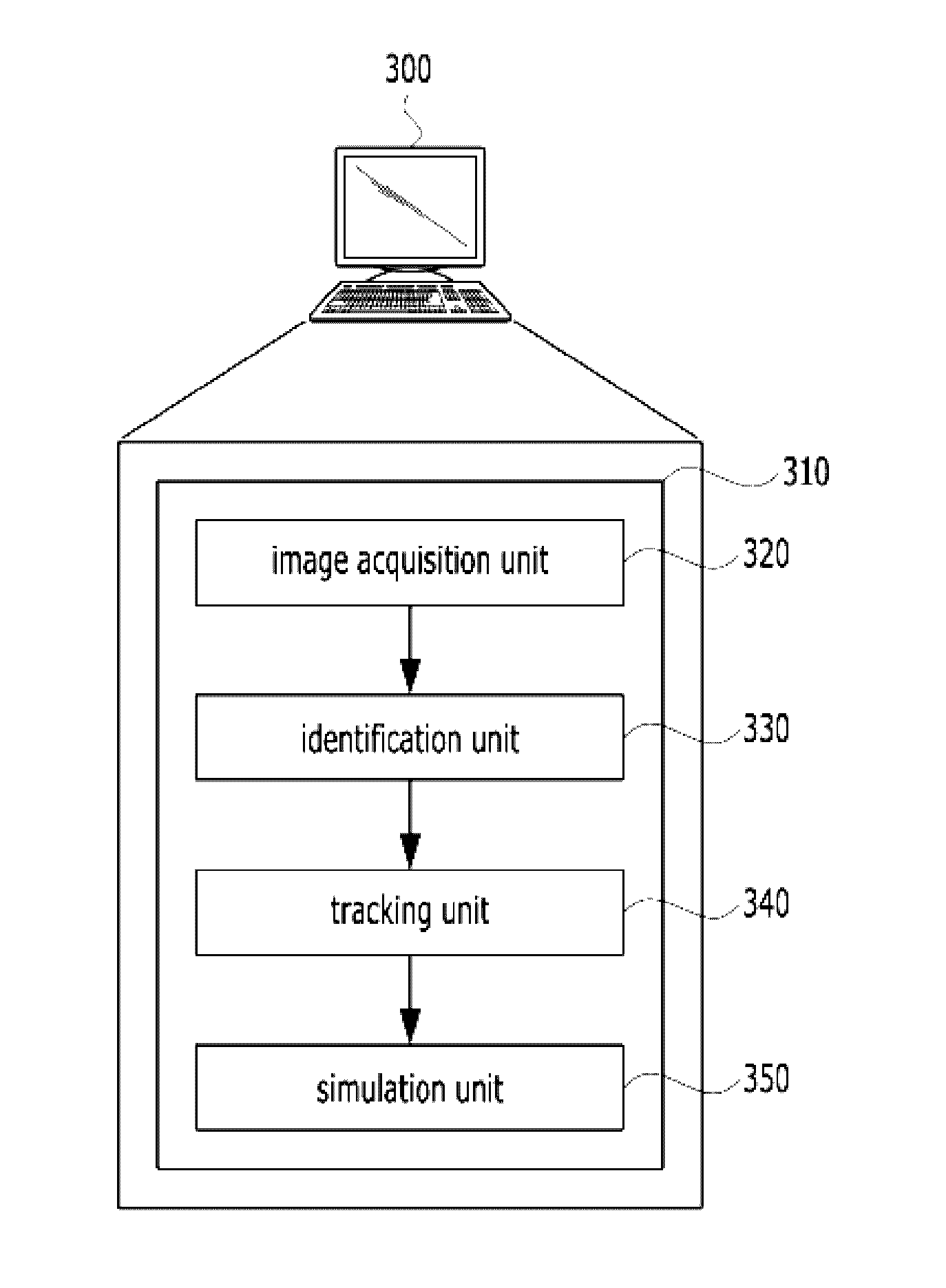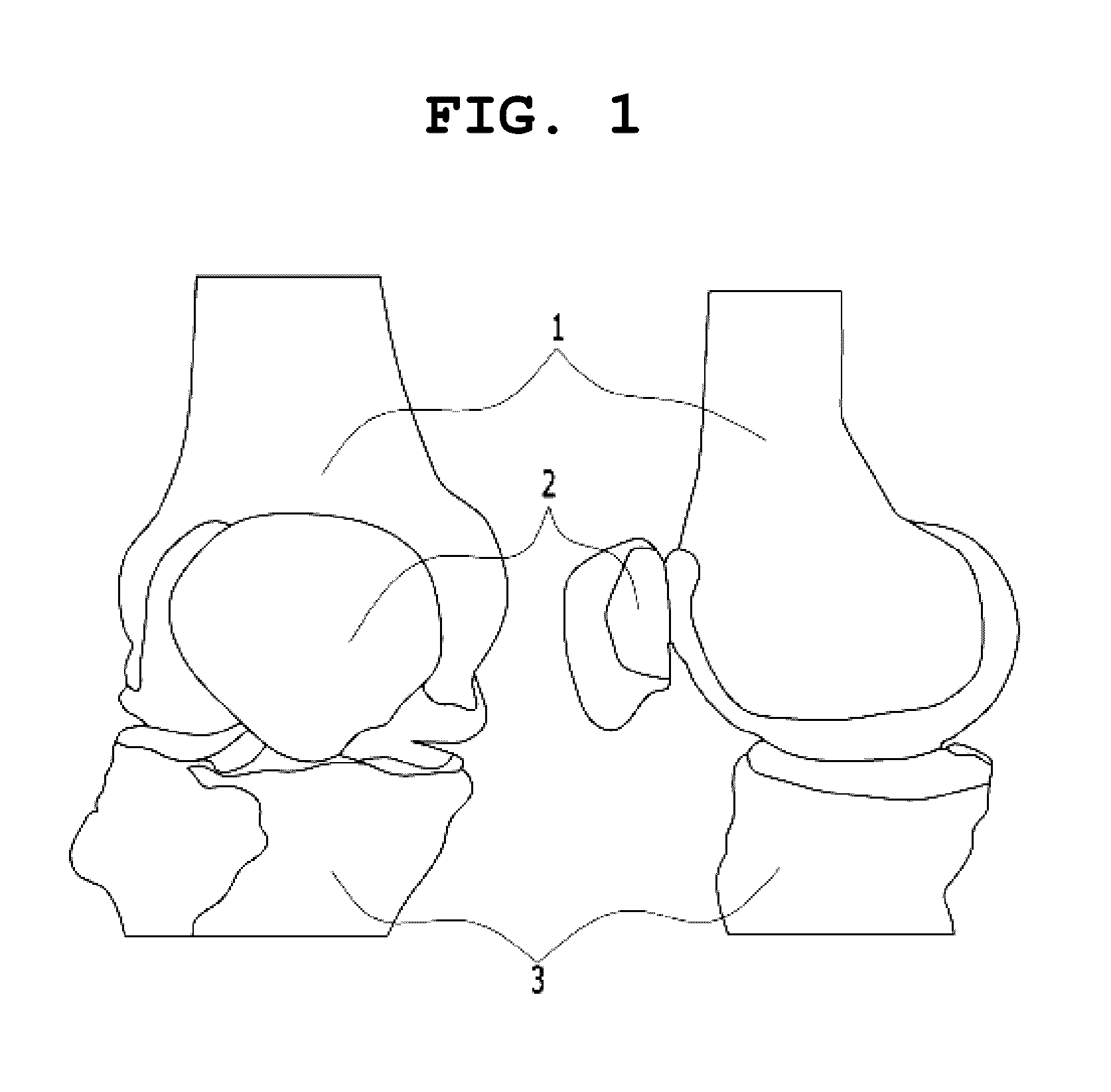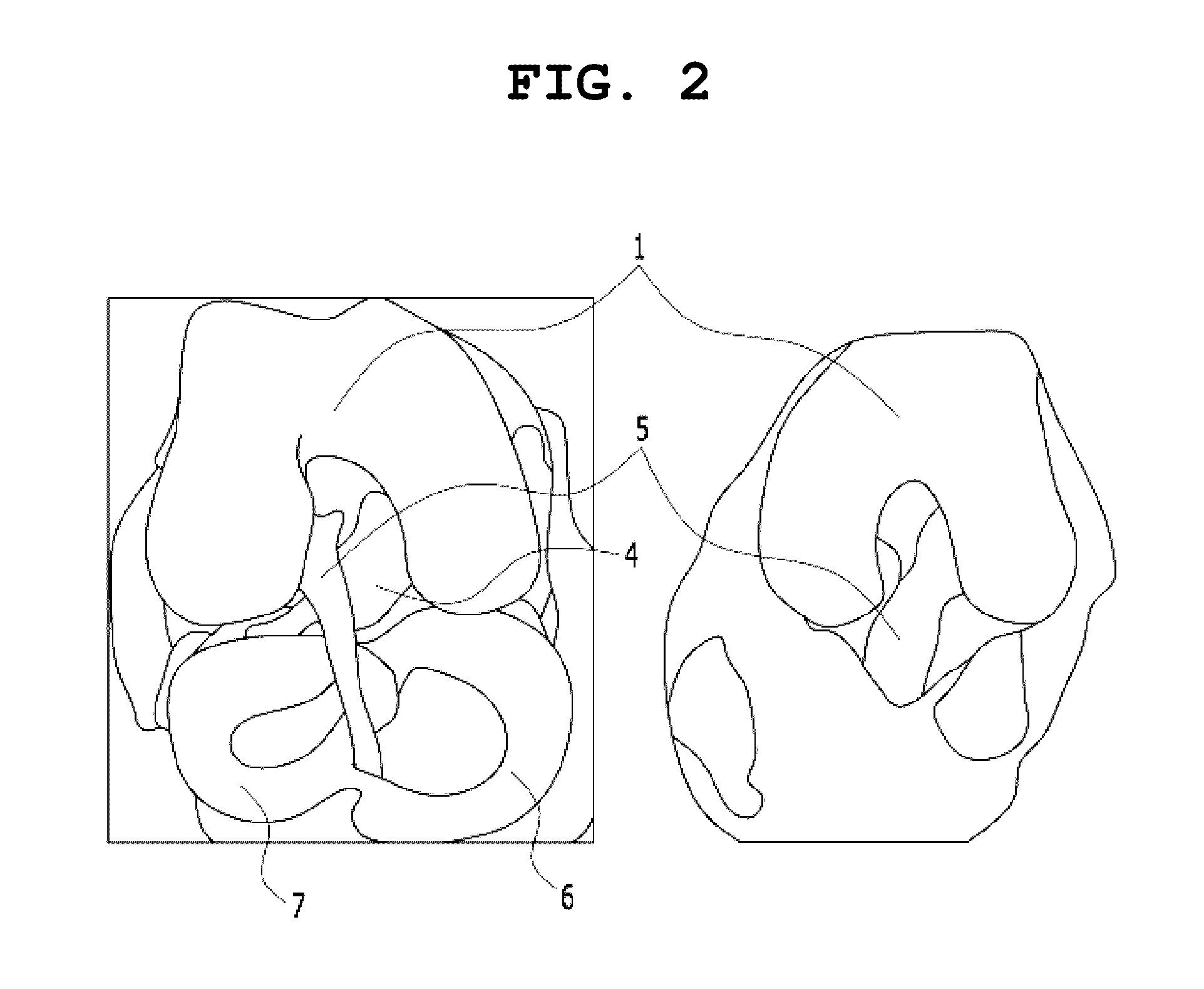System and method for simulating reconstructive surgery of anterior cruciate ligament using medical images
a technology of anterior cruciate ligament and medical images, applied in the field of system and method of simulating surgery using medical images, can solve the problems of affecting and affecting the accuracy of human parts in sports, skis, american football or the like, and the possibility of damaging the acl is high, and achieves the effect of reducing tension
- Summary
- Abstract
- Description
- Claims
- Application Information
AI Technical Summary
Benefits of technology
Problems solved by technology
Method used
Image
Examples
Embodiment Construction
[0049]Embodiments of the present invention will be described in detail below with reference to the accompanying drawings. In the following description, detailed descriptions of related known components or functions that may unnecessarily make the gist of the present invention obscure will be omitted. Furthermore, in the following description of embodiments of the present invention, specific numerical values are merely examples.
[0050]The present invention relates generally to a system and method for simulating surgery using medical images, and more particularly to a system and method that are capable of simulating the restorative surgery of a cruciate ligament. According to the present invention, a ligament can be virtually inserted and then changes attributable to the movement of a knee (i.e., changes in the length of the ligament, changes in the tension of the ligament, etc. when the knee moves) can be simulated before the reconstructive surgery of a cruciate ligament is actually p...
PUM
 Login to View More
Login to View More Abstract
Description
Claims
Application Information
 Login to View More
Login to View More - R&D
- Intellectual Property
- Life Sciences
- Materials
- Tech Scout
- Unparalleled Data Quality
- Higher Quality Content
- 60% Fewer Hallucinations
Browse by: Latest US Patents, China's latest patents, Technical Efficacy Thesaurus, Application Domain, Technology Topic, Popular Technical Reports.
© 2025 PatSnap. All rights reserved.Legal|Privacy policy|Modern Slavery Act Transparency Statement|Sitemap|About US| Contact US: help@patsnap.com



